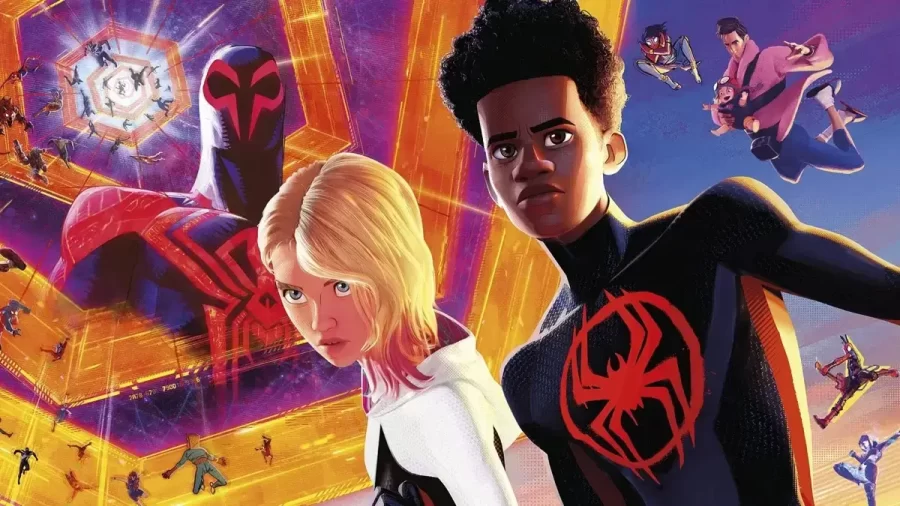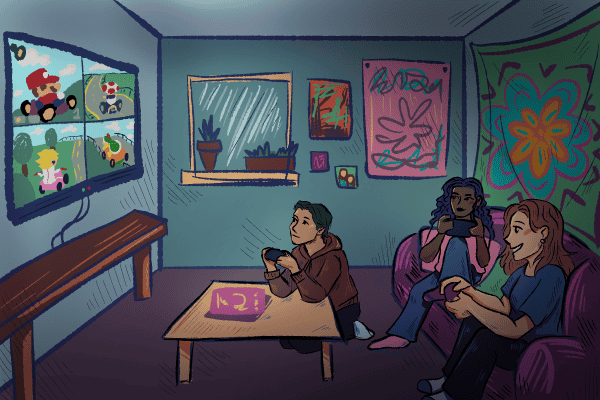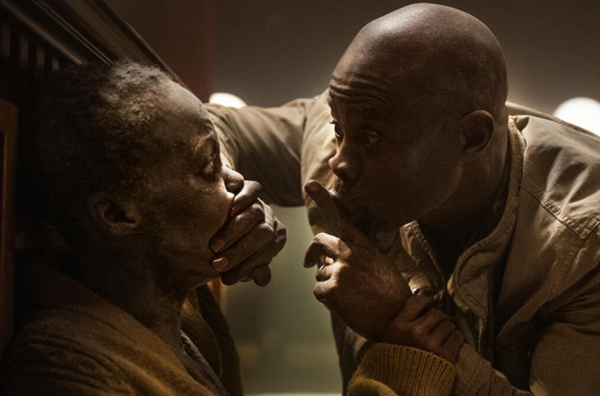Culture Pick: ‘Across the Spider-Verse’: Great, but not quite revolutionary
June 14, 2023
“Pandemonium” would be the word most aptly describing the world of film since the release of “Spider-Man: Across the Spider-Verse” on June 2.
In 2018, “Spider-Man: Into the Spider-Verse” was met with heaps of praise, and its sequel has turned up the dial. Upon hitting theaters, it has garnered a 96% critics’ rating on Rotten Tomatoes, a 95% audience score from the same aggregate, a 9.0/10 on IMDb and a 4.6/5 on Letterboxd.
Three of these ratings are higher than the original “Spider-Verse” film, and the last is currently one of the highest ratings for a movie in Letterboxd’s entire database. Such transcendent marks raise the timeless question: Does it live up to the hype?
The short answer: a hesitant, nuanced “maybe?”
To say that “Across the Spider-Verse” is overhyped might give the impression that the film is in some way subpar or disappointing. This is far from the case.
By all accounts, the middle entry in the Spider-Verse trilogy is, like the first, a certifiable success. In the landscape of ever-drying comic book films that do little to break the mold, “Across the Spider-Verse” does just that, and in a myriad of ways.
The main storyline is set around returning protagonist Miles Morales as he continues to navigate life as a high school student with unique aspirations and parents who, though ultimately out of loving protectiveness, often hinder those dreams more than embolden them.
Miles is the lone Spider-Man of his universe, and though the burden of being Spider-Man doesn’t factor quite as much into his identity crisis as it does for the Peter Parker of Sam Raimi’s “Spider-Man 2,” it is nonetheless a difficult additional ball to juggle. There’s also the heartache of missing alternate-universe Gwen Stacy, whom, as seen through copious drawings lining his sketchbook, he misses ardently.
Life for Miles is already confusing and, at times, filled with strife. When Gwen pays him an unexpected visit and reveals the scope of an inter-universal conflict, however, his struggles are multiplied tenfold.
Over the course of the next two hours, the audience is gifted with a thorough, carefully crafted exploration of this expansive world, which is seemingly deeper than meets the eye. We meet the Spider-Society and a deliriously diverse cast of Spider-Men, hop through multiverses, and are granted one of the most tantalizing Hollywood cliffhangers since “Avengers: Infinity War.”
Perhaps the strongest aspect of “Across the Spider-Verse” is the bevy of thematic and philosophical questions that arises from such an awe-inspiringly vast collection of universes, characters, tenuous situations and individual struggles.
Some of these that require little spoiling include: What is Miles’ role in the chaos of the multiverse? Is it right to allow “canon events”? Is the Spider-Society valid in trying to prevent the potential destruction of universes, or are they unjustly interfering with basic morality? What are the ramifications of the revelation upon Miles’ identity as his universe’s Spider-Man? Is he wrong to fall in love with a girl who exists outside the fabric of his own world?
Not only is the film thought-provoking, but it’s also fun in its purest form. Two hours and 20 minutes — the longest runtime for any animated movie released in the U.S. — flies by, thanks to meticulous pacing, engaging character dynamics and enthralling action. Were the “Beyond the Spider-Verse” trilogy-capper available to watch as soon as the credits of “Across the Spider-Verse” rolled, moviegoers would be more than willing to spend another 150 minutes in the theater.
Even with all these praiseworthy elements, the elephant in the room still must be addressed: is this movie that good? Is it, as described by Variety, the “Dark Knight” of animated movies, and should it be nominated for Best Picture? Is it the best Spider-Man movie? Is it even as good as the first?
Rather than meddle with superlatives, let’s look at things pragmatically. “Across the Spider-Verse” is a venerable superhero and animated movie; still, it bleeds. Its charming and intriguing villain is not as fully explored as his significant relationship with Morales demands, and he’s notably absent from the third act.
Its animation and comic-book style are even more prevalent than in the first “Spider-Verse,” and while it makes for some breathtakingly creative moments, it also creates some headaches.
One could view the instances of blurred background animation and fuzzy object renderings as thematic, but it doesn’t change the fact that they’re often frustrating to look at. On another note, what’s the deal with the Hobie and Spider-Punk storyline. It’s unclear if there is supposed to be romantic tension or if he exists predominantly as arbitrary comedic relief.
On yet another note, where does “Spider-Man: No Way Home” stand in all this? It would be imprudent to try and make a direct comparison, but it’s hard to ignore the structural, emotional, and thematic parallels between it and this newest Spider-Man flick.
They’re too similar not to be grouped together, and for what it’s worth, “No Way Home” arguably uses its fan service and emotional payoffs to a more effective degree. Either way, “Across the Spider-Verse” loses some of the novelty of its 2018 forerunner. The concept of multiverses and “Oh! I know that character! He exists in a different universe but is still part of the same franchise?!” is a little less lustrous.
To the movie’s credit, these problems are nit-picky and mostly tied to its status as the first of two parts. That’s the overall feeling invoked by “Spider-Man: Across the Spider-Verse”: There’s a lot of cool, fun, and enthusing stuff going on, and the excitement for the finale will do nothing but build over the next year-plus, but it’s difficult to herald it as a cinematic masterpiece on its own. Until then, we don’t even know what it truly is on its own.
“Spider-Man: Across the Spider-Verse” was released on June 2 and can be viewed in theaters worldwide.











